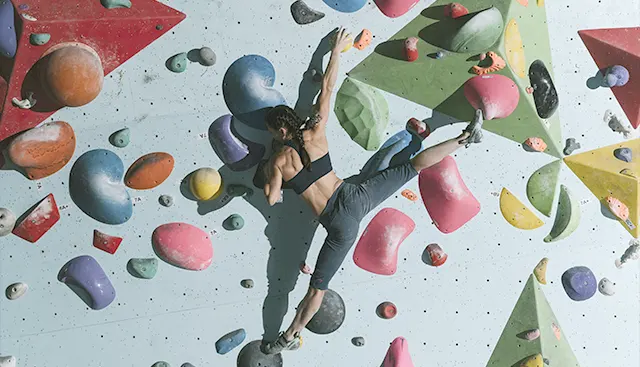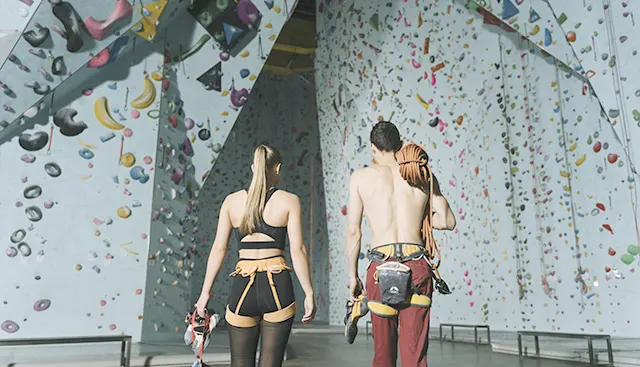
The importance of morphology in climbing
In the world of climbing, the morphology or body shape of a climber can have a significant impact on the practice of this sport. There are different types of bodies and proportions, and each presents advantages and disadvantages on the playing field.
Morphology and difficulty level in climbing
The morphology of a climber can affect the perception of the difficulty of a route, as different body types will experience different challenges when facing a climbing route. Some morphological factors that may influence how a climber perceives the difficulty of a route include:
- Reach and wingspan: Climbers with longer limbs may find it easier to reach distant holds on a route, while those with shorter limbs may face greater challenges in the same movements.
- Flexibility and mobility: The flexibility and mobility of a climber can also affect the perception of difficulty. A less flexible climber may find a route that requires demanding movements more challenging, while a more flexible climber may overcome these obstacles more easily.
- Relative strength and weight distribution: Weight distribution and relative strength in different parts of the body can also influence how a climber perceives the difficulty of a route. For example, a climber with a strong upper body could easily overcome a roof, while another with greater strength in the lower body may find it easier to climb vertical routes that require technique and balance.
Recognizing and understanding how morphology affects the perception of difficulty in climbing is essential for climbers to develop a personalized approach in their climbing practice. By knowing their own limitations and advantages, climbers can adapt their climbing style and tackle routes that best suit their physical characteristics. Additionally, by climbing with people of different morphologies, climbers can learn and acquire new skills from those whose approach differs from their own.

Climber-specific training
Although morphology is often thought to be a negative factor in climbing practice, it just takes a change in perspective. Within the different modalities and styles of climbing, there are always morphologies that enhance their characteristics to achieve faster success in certain styles.
Training is essential to progress quickly in the practice of this sport. And it’s not all about strength, as it may seem. The technique of grips, flexibility, balance, footwork technique, and of course explosive strength.
To improve the overall technique of progression, whether on rock or in a climbing gym, one must first become aware of the climber’s morphology and the advantages it provides. We can always find advantages. It is the limitations that are consciously trained to minimize the negative effect on future ascents.
If you need a specific training, do not hesitate to ask us. We are sure we can help you.
Diversity in climbing
The diversity in the morphology of climbers is an advantage for the climbing community as a whole. Climbing with people of different morphologies can help climbers learn from each other and adapt to different climbing styles.
This diversity of climber morphology requires route setters to make an extra effort to design routes and competitions that include this variety. It also allows climbers to challenge themselves with increasingly demanding movements for their physical condition.
Injury prevention based on morphology in climbing
Each type of morphology is subject to a more common type of injury. Climbers should be aware of their physical characteristics and how they may influence predisposition to certain injuries.
To minimize the risk of injuries, climbers should:
- Adapt your training and focus based on your morphology and injury-prone areas.
- Include specific strengthening exercises in your routine to address weak or vulnerable areas.
- Pay attention to proper technique when climbing, avoiding sudden or improper movements that may cause excessive strain on joints and muscles.
By recognizing the relationship between morphology and potential injuries, climbers can adapt their approach to stay healthy and enjoy a sustainable long-term climbing practice.
Variation in the perception of the difficulty level of a route according to the morphology of the climber
Although climbing routes often have an assigned grade to indicate their difficulty, it is important to recognize that the perception of this grade can vary among climbers due to differences in their morphology. The subjective perception of a route’s grade can be affected by morphological factors such as limb length, flexibility, and relative strength in different parts of the body.
Some examples of how morphology can influence the perception of the degree of a route include:
- A climber with a longer reach may find a route graded as 7a relatively easy, while another climber with a shorter reach may perceive the same route as a 7b or even more difficult due to the additional movements required to overcome the key steps.
- A climber with high flexibility may perceive a route graded as 6c as a 6a if the route requires demanding movements that are more accessible to them.
- A climber with well-developed lower trunk strength may find it easier to maintain balance on a technical route graded as 6a, while another climber with less strength in this area may perceive the same route as a 6b.
Ultimately, the perception of the difficulty level of a climbing route is subjective and can vary significantly among climbers due to differences in morphology. It is important for climbers to understand their own strengths and limitations and not solely focus on the assigned grade of a route. By knowing their abilities and physical characteristics, climbers can choose routes that suit their specific needs and challenges, and develop their own approach based on their morphology.

